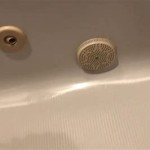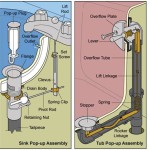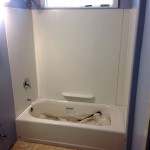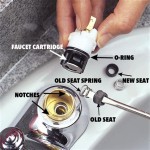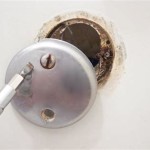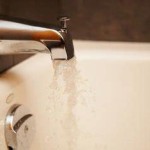Are Bathtub Drains a Standard Size? Understanding Bathtub Drain Dimensions
The question of whether bathtub drains adhere to a standard size is frequently encountered during bathroom renovations, repairs, and new constructions. The answer, while seemingly straightforward, involves nuances related to different types of drains, materials, and regional variations. This article will provide a comprehensive overview of bathtub drain sizes, exploring the common dimensions, variations, installation considerations, and factors influencing drain selection.
Bathtub drains serve the essential function of channeling wastewater away from the tub and into the plumbing system. A properly functioning drain prevents water accumulation, which can lead to overflow, water damage, and unsanitary conditions. Understanding the dimensions and compatibility of these drains is crucial for ensuring a leak-proof and efficient system.
Common Bathtub Drain Sizes and Dimensions
While there isn't a universally rigid "standard" in the strictest sense, certain dimensions are overwhelmingly prevalent in residential bathtub drain systems. These dimensions relate to the drain opening in the tub itself, the drain pipe connection size, and the overall length of the drain assembly.
The most common drain opening size in a bathtub is 1 ½ inches in diameter. This dimension refers to the internal diameter of the flange, which is the visible portion of the drain that fits flush against the bottom of the tub. This 1 ½ inch opening is designed to accommodate a standard-sized drain stopper or strainer.
The drain pipe connection size, which refers to the diameter of the pipe that connects to the drain assembly underneath the tub, is typically also 1 ½ inches. This allows for a consistent flow of wastewater through the drainage system. The threads on the drain tailpiece, the portion of the drain assembly that connects to the drain pipe, are also designed to match this standard.
The overall length of the drain assembly, including the tailpiece, overflow pipe (if applicable), and linkage, varies depending on the tub's design and the placement of the drain. However, most standard drain assemblies fall within a range of 12 to 18 inches. It is important to measure the distance from the bottom of the tub to the drainpipe connection to ensure that the new drain assembly is of an appropriate length.
Variations can occur, especially in older homes or with imported fixtures. Therefore, careful measurement and verification are always recommended before purchasing a replacement drain assembly.
Types of Bathtub Drains and Their Size Considerations
The category of bathtub drains encompasses several distinct types, each with its own design specifications and potential size variations. Understanding the different types is essential for accurate identification and replacement.
The most common type is the lift-and-turn drain, which features a knob that is lifted and turned to open and close the drain. The stopper is attached to a linkage that controls the drain's position. These drains typically adhere to the standard 1 ½ inch drain opening and pipe connection sizes.
Another prevalent type is the pop-up drain. This drain utilizes a spring-loaded mechanism to open and close. Pressing the stopper down opens or closes the drain. Pop-up drains also generally conform to the standard dimensions; however, variations in the stopper design and linkage can affect compatibility with certain tubs.
Toe-touch drains are activated by pressing the stopper with one's toe. This mechanism is often more convenient than manual lift-and-turn drains. These drains also generally use the standard 1 ½ inch opening and pipe connection sizes.
A more traditional type is the trip-lever drain, which uses a lever located on the overflow plate to control the drain. These drains often feature a more complex linkage system and may have slightly different size considerations, particularly in older models. It's also worth noting that these often include a way to remove the stopper for cleaning purposes.
Finally, waste-and-overflow (W&O) drains are complete drain systems that include the drain stopper, overflow pipe, and all necessary linkages. These systems are designed to provide a complete drainage solution and are often sold as a unit. W&O drains typically adhere to the standard dimensions, but it's essential to verify compatibility with the specific tub model.
When replacing a bathtub drain, it is critical to identify the existing type and compare its dimensions with the replacement part. Incompatibility can lead to leaks, improper drainage, and costly repairs.
Factors Influencing Bathtub Drain Selection and Installation
Selecting and installing a bathtub drain involves several considerations beyond simply conforming to standard sizes. These factors include material, tub type, plumbing configuration, and local building codes.
Bathtub drains are typically made from brass, stainless steel, or plastic. Brass drains are durable and resistant to corrosion, but they can be more expensive. Stainless steel drains are also corrosion-resistant and offer a modern aesthetic. Plastic drains are the most affordable option, but they may be less durable than metal drains. The choice of material depends on budget, aesthetic preferences, and the expected lifespan of the drain.
The type of bathtub can also influence drain selection. Freestanding tubs often require specialized drain assemblies that are designed to connect to the plumbing system without being concealed within a cabinet or enclosure. These drains often have a more decorative finish and may require professional installation.
The plumbing configuration beneath the tub is another important factor. The drainpipe must align correctly with the drain assembly to ensure a proper seal. If the existing plumbing is not aligned properly, it may be necessary to modify the plumbing before installing the new drain.
Local building codes dictate specific requirements for plumbing installations, including drainage systems. These codes may specify the type of materials that can be used, the minimum drainpipe size, and the required venting. It is essential to consult local building codes before installing a new bathtub drain to ensure compliance.
Installation can be a complex process, often requiring specialized tools and knowledge. Improper installation can lead to leaks, which can cause significant water damage. If unsure about any aspect of the installation process, it is advisable to consult a qualified plumber.
When replacing a bathtub drain, it is recommended to purchase a complete drain assembly that includes all necessary components, such as the stopper, flange, tailpiece, overflow pipe, and linkage. This ensures compatibility and simplifies the installation process.
Prior to installation, the area surrounding the drain opening should be thoroughly cleaned to remove any debris or old sealant. A new layer of plumber's putty or silicone sealant should be applied to the flange to create a watertight seal. The drain should be tightened securely to the tub, but not overtightened, as this can damage the tub or the drain itself.
After installation, the drain should be tested for leaks by filling the tub with water and observing the drain area for any signs of leakage. If leaks are detected, the connection should be tightened or resealed as necessary.
Maintaining a bathtub drain involves regular cleaning to prevent clogs and ensure proper drainage. Hair, soap scum, and other debris can accumulate in the drain and restrict water flow. Regular cleaning with a drain snake or chemical drain cleaner can help to prevent clogs. Periodic inspection of the drain assembly can also help to identify any signs of wear or damage, such as cracks or corrosion. Addressing these issues promptly can prevent more significant problems in the future.
In conclusion, while bathtub drains often adhere to common sizes, particularly regarding the 1 ½ inch drain opening and pipe connection, variations exist. Furthermore, factors such as drain type, material, tub design, and local codes play a crucial role in drain selection and proper installation. Careful measurement, identification of the existing drain type, and compliance with local regulations are crucial steps in ensuring a successful and long-lasting bathtub drain installation or replacement.

Are Bathtub Sizes The Rough In Size Or Tub Interior Home Improvement Stack Exchange

Deluxe Bathtub Drains Brass Construction Available In Designer Finishes

Plumbing Do Tub Drains Of The Same Diameter Ever Have Diffe Thread Per Inch Counts Home Improvement Stack Exchange

Standard Bathtub Size

How To Size A Tub Drain

How To Identify Your Tub Drain Style A Comprehensive Guide Hofen

Deluxe Bathtub Drains Brass Construction Available In Designer Finishes

0184000 020 American Standard Colony Integral Apron Tub Left Hand White Steel Build Ca

Deluxe Bathtub Drains Brass Construction Available In Designer Finishes

What Is The Standard Tub Drain Size
Related Posts

